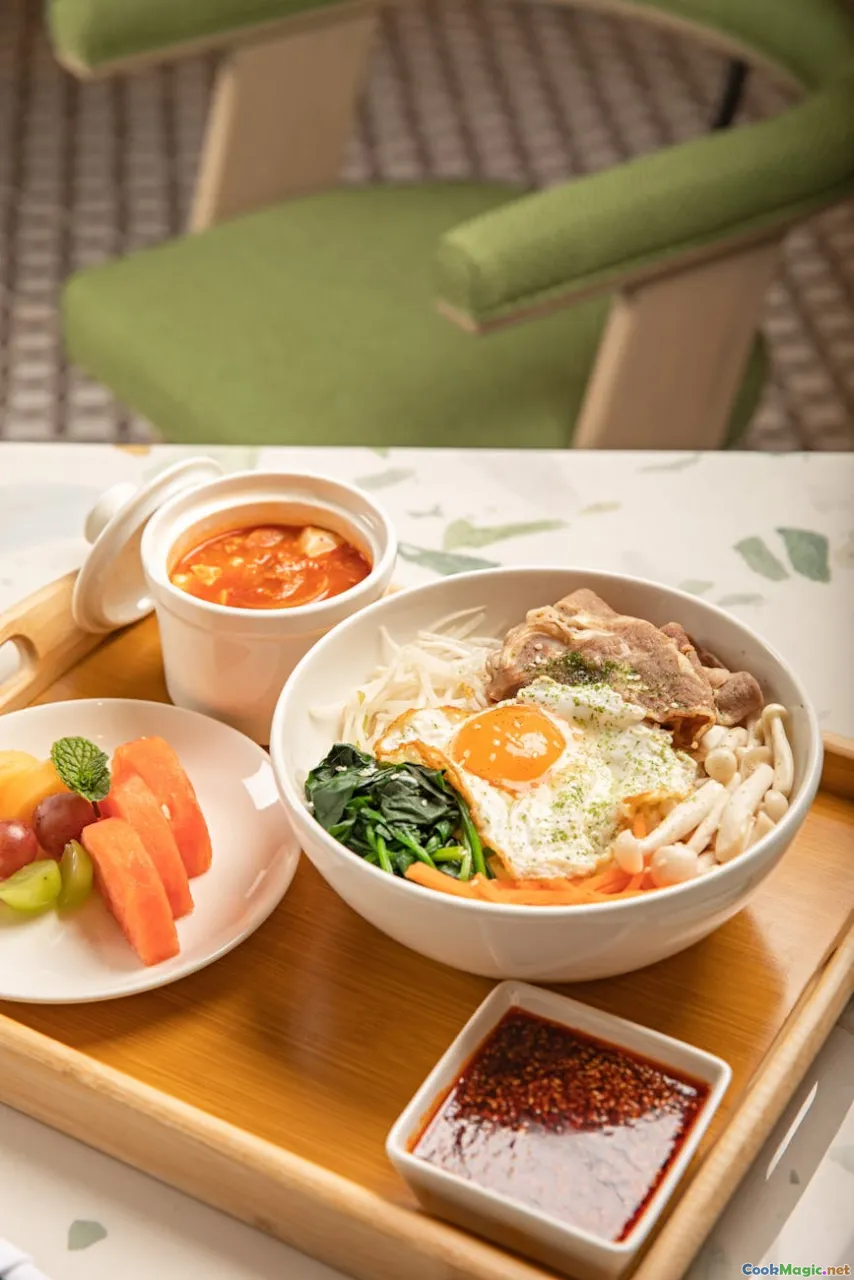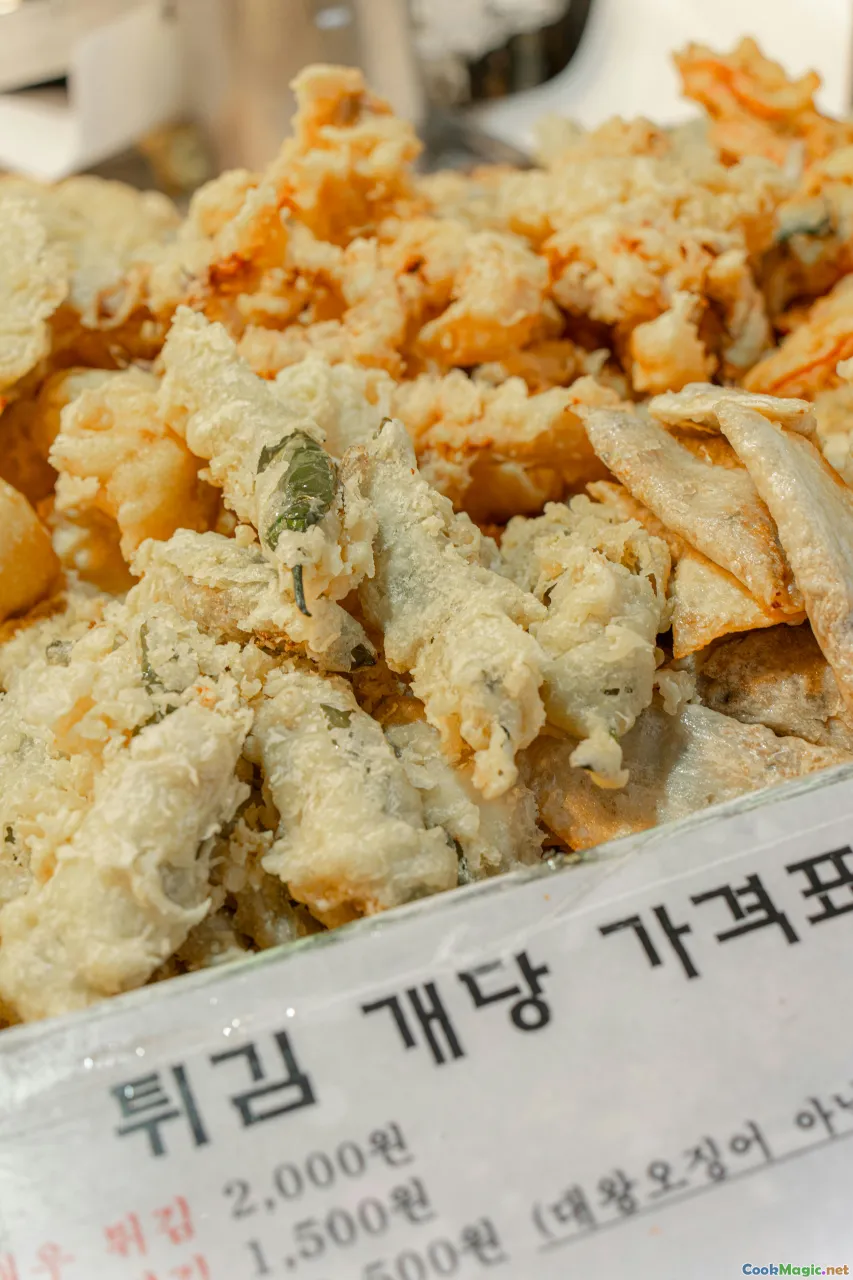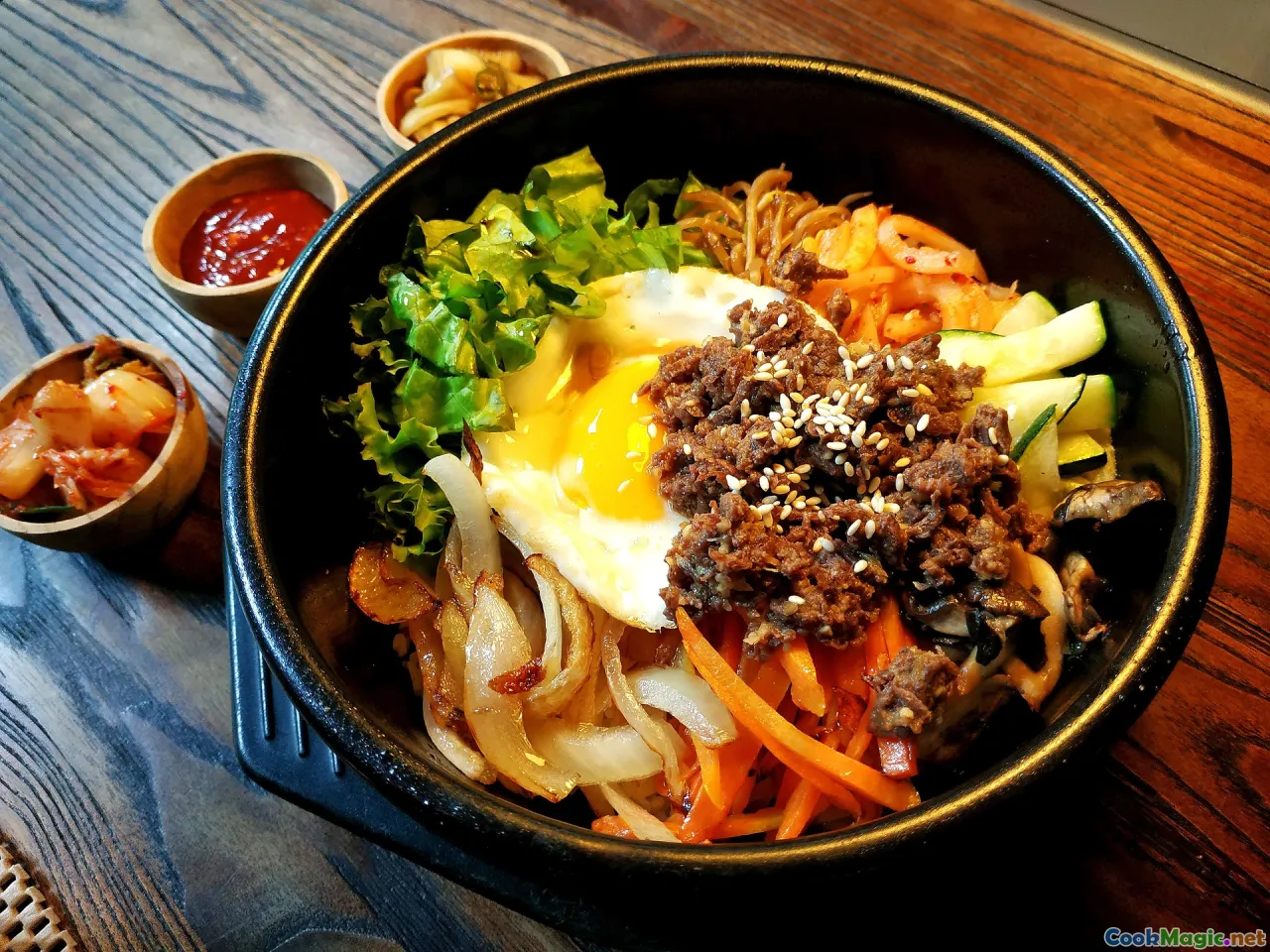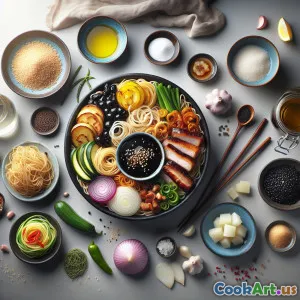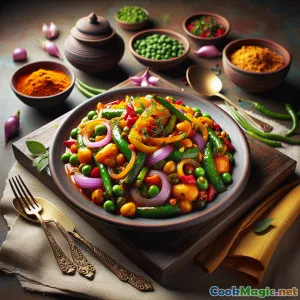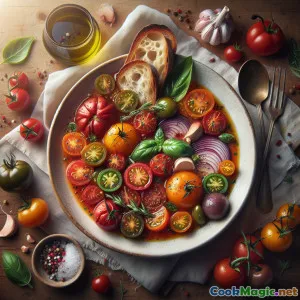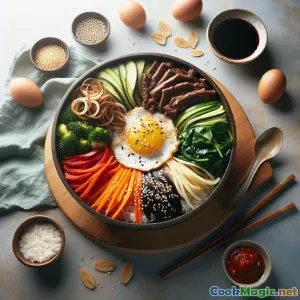
Delicioso Bibimbap Coreano: Un Cuenco de Arroz Colorido
(Delicious Korean Bibimbap: A Colorful Rice Bowl)
(0 Reseñas)0
822
junio 29, 2025
Informar de un problema
Ingredientes
-
2 cups Arroz Cocido
(Usa arroz de grano corto para mayor autenticidad)
-
150 grams Carne de Res
(Cortado en rodajas finas, se puede usar carne de bulgogi)
-
1 medium Zanahoria
(Juliana)
-
1 medium Calabacín
(Juliana)
-
1 cup Espinaca
(Blanqueado)
-
2 large Huevo
(Huevo frito con la yema hacia arriba)
-
2 tbsp Gochujang
(Pasta de chile rojo coreano)
-
1 tbsp Aceite de sésamo
(Para sabor)
-
1 tbsp Salsa de soja
(Para marinar carne de res)
-
1 tbsp Semillas de sésamo
(Para decorar)
(Usa arroz de grano corto para mayor autenticidad)
(Cortado en rodajas finas, se puede usar carne de bulgogi)
(Juliana)
(Juliana)
(Blanqueado)
(Huevo frito con la yema hacia arriba)
(Pasta de chile rojo coreano)
(Para sabor)
(Para marinar carne de res)
(Para decorar)
Nutrición
- Porciones: 2
- Tamaño de porción: 1 tazón (350g)
- Calories: 700 kcal
- Carbohydrates: 80 g
- Protein: 30 g
- Fat: 25 g
- Fiber: 6 g
- Sugar: 5 g
- Sodium: 600 mg
- Cholesterol: 200 mg
- Calcium: 150 mg
- Iron: 3 mg
Instrucciones
-
1 - Prepara los ingredientes:
Lava y corta en juliana la zanahoria y el calabacín. Blanquea las espinacas en agua hirviendo.
-
2 - Cocinar la Carne de Res:
Marina la carne de res en salsa de soja y aceite de sésamo durante 10 minutos, luego saltea hasta que esté cocida.
-
3 - Saltear las verduras:
En una sartén, saltea las zanahorias y el calabacín por separado hasta que estén tiernos.
-
4 - Freír los Huevos:
En una sartén aparte, fríe los huevos con la yema hacia arriba.
-
5 - Montar Bibimbap:
En cada tazón, coloca una porción de arroz, cubre con carne de res, verduras y un huevo frito. Rocía con gochujang y aceite de sésamo.
-
6 - Servir:
Adorna con semillas de sésamo y sirve caliente, mezclando todos los ingredientes antes de comer.
Lava y corta en juliana la zanahoria y el calabacín. Blanquea las espinacas en agua hirviendo.
Marina la carne de res en salsa de soja y aceite de sésamo durante 10 minutos, luego saltea hasta que esté cocida.
En una sartén, saltea las zanahorias y el calabacín por separado hasta que estén tiernos.
En una sartén aparte, fríe los huevos con la yema hacia arriba.
En cada tazón, coloca una porción de arroz, cubre con carne de res, verduras y un huevo frito. Rocía con gochujang y aceite de sésamo.
Adorna con semillas de sésamo y sirve caliente, mezclando todos los ingredientes antes de comer.
Más información sobre: Delicioso Bibimbap Coreano: Un Cuenco de Arroz Colorido
Bibimbap, un plato tradicional coreano, no es solo una comida; es una forma de arte. El nombre en sí se traduce como 'arroz mezclado', y eso es exactamente lo que es: un tazón colorido de arroz cubierto con una variedad de verduras salteadas y condimentadas, carne de res y un huevo frito, todo mezclado con una cucharada de salsa picante de gochujang. Históricamente, el bibimbap era una forma de aprovechar ingredientes sobrantes, convirtiéndolo en un plato práctico para las familias. Cada ingrediente en el bibimbap tiene su propio sabor y valor nutricional únicos, haciendo de él una comida bien equilibrada. Los colores vibrantes de las verduras representan la armonía del yin y el yang en la cultura coreana, simbolizando equilibrio y salud. Para una opción vegetariana, simplemente omite la carne de res y añade más verduras o tofu. Este plato es perfecto para compartir y permite que cada persona personalice su tazón según su gusto. Ya sea disfrutado en casa o en un restaurante, el bibimbap es una experiencia encantadora que une a las personas alrededor de la mesa.

